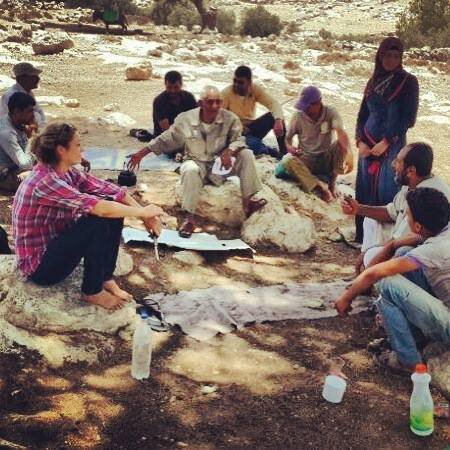Academic Research
Ph.D.
University of Miami, Abess Center for Ecosystem Science and Policy
As a recent PhD graduate, my research focused on forward-looking architectural and urban design responses to climate change. Drawing on the vast utopian projects of the past, particularly those that concern ecological stewardship, I examine the relationship between anthropogenic climate change and the rise of modern design proposals that imagine radical new ways of living. These 21st century climate change utopias, or “climatopias” as I term them in my research, reveal much about the dominant hopes and tensions of our time vis-à-vis climate change and the built environment.
Publications:
University press release: New research reveals insights on climate-inspired urban design projects
Carrère, A., Broad, K., & Mach, K. J. (2024). Defining “climatopia”: An evaluation framework to support transformational adaptation in climate-inspired utopic design. One Earth, 7(10), 1692-1704.
Carrère et al. (2024). A typology of climatopias: visualizations, motivations, and transformations. Environmental Research: Climate, 3(4), 045024.
Research Lab (Climate Risks and Preparedness Lab, University of Miami)
Paul Maymont’s Floating City, Study for the Bay of Tokyo, 1960. Plans for ecological utopias (“ecotopias”) have been a part of human design fantasies for centuries.
M.Sc.
McGill University, Department of Bioresource Engineering
Many watersheds around the world are facing increasingly complex water crises. These crises can only begin to be addressed in an effective and sustainable manner if we transition to more integrated and adaptive forms of water resources planning and governance. For the last quarter century there has been an emerging acceptance and use of Integrated Water Resource Management (IWRM) across the water sector.
As a student in McGill University’s IWRM master’s program, my research focused on the nexus between electronic waste burning, water pollution and environmental health in affected communities across southern Israel and Palestine (West Bank). As a visiting researcher at Ben-Gurion University of the Negev, I worked with Dr. Yaakov Garb and Dr. John-Michael Davis, conducting interviews in the southern West Bank with industry experts, young e-waste “burners”, shepherds, farmers and heads of households to map the deleterious effects of e-waste disposal activities on human and environmental health. I also spent time visually documenting the effects in different communities, particularly around agricultural burn sites. Dr. Garb and Dr. Davis went on to publish several papers on their work in the area, including valuable contributions to the topic of transboundary e-waste flows and what place-specific characteristics attract this polluting industry to emerge.
An opinion piece in the New York Times that covers the region and topic of this work can be found here.
Electronic waste burns at dusk in a village in the southern West Bank, Palestine. Photo by Alizé Carrère.
E-waste like these discarded motherboards are often burned to melt away invaluable plastic casing, leaving behind valuable bits of metal that can be harvested and re-sold. Photo by Alizé Carrère.
Focus group with Palestinian shepherds and farmers affected by e-waste burning activities. Beit Awwa, West Bank, Palestine. Photo by Hussam Sweity.
Documenting scenes from the night market, where refurbished goods are bought and sold. Photo by Hussam Sweity.




